Sunday Summaries 03/04/2016: The Witcher 3 & Lumino City
By Mento 2 Comments
If there's anything I've learned in the past week, if only because they required the most round-the-clock moderation, it's the following three revelations:

One, Virtual Reality might well be a thing some day, but there's clearly a ways to go. I suppose I should reserve judgement until after the upcoming Vive (this Tuesday) and PSVR (October? I think?) all-day streams, but I'd imagine that all three have the same mix of "here's a game you've probably played before, but now you're actually in there, dude!", so-so launch games that don't have a whole lot to them beyond their VR novelty and lots of "interactive experiences". But, you know what? This is pretty much how CD-ROM games started out too, and we've never looked back after the industry finally got to grips with those and the similar optical media formats that followed. Folk might not know - unless they've read up on the Japanese PC Engine CD-ROM or something like this ill-advised No.Ri.Ko LP - but CD games began as far back as late 1988. It wasn't really until PC games of the early 90s and the PlayStation and Sega Saturn in 1994 (1995 in the US) that CD-based games became the de facto format - before then, we had the 3DO, the CD-i, the TurboGrafx-CD and the Sega CD and a lot of odd experiments concerning horror movie sleepovers, weird interactive non-games involving music videos and slightly enhanced versions of 16-bit favorites. Even if the next couple of VR introductory streams from Giant Bomb prove that none of the three big (unless I'm missing one?) VR sets are day-one must-buys, I'm not inclined to write VR off entirely. Certainly won't be buying one for a while, though.
Two, there are an absurd number of people willing to go to bat for Quantum Break despite it being a new IP with no extant fanbase and that it's been stuck in a (thematically-appropriate) time-frozen limbo in the three years since its inclusion on a demo reel for the then-upcoming Xbox One's reveal conference. When a game takes that long to come out, it's never a surprise when it turns out to be fairly average. Remember Duke Nukem Forever? In fact, there's probably a graph we could draw up that makes the case that the amount of extra time it takes to develop a game is inversely proportional to the quality of the final product. I'm hoping such a graph isn't conclusive, because that wouldn't bode well for The Last Guardian (nine years in development) or Final Fantasy XV (ten years in development).
Three, the general antipathy people have towards those who wish "shlooters", or loot RPGs framed by FPS gameplay, could improve fundamental aspects beyond the purely mechanical cycle at its core of shooting waves of enemies to earn gear with slightly higher numbers. The site's guest column feature recently saw an intelligent critique on the recent Ubisoft shlooter The Division that called for more logical consistency behind its story beats and the messages regarding power, freedom and violence it was conveying, either consciously or unconsciously. Most of the responses - polite and impolite alike - suggested a game like The Division doesn't and shouldn't need to worry about something as "trivial" as its story or themes. The only reason it wasn't a space marine gunning down aliens is probably due to the fact that it would invite even more comparisons to Bungie's Destiny or Gearbox's Borderlands than it does already.
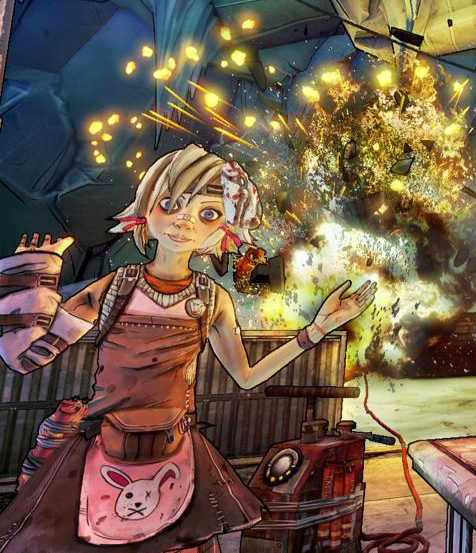
On the one hand, I've always considered rating games by their mechanical complexity and gameplay features as more important for game-specific critics purely because those are aspects unique to the medium and thus more challenging for a general media critic to properly scrutinize, but on the other hand I recognize that perspective as being largely the result of my background as a game designer. If you have more of an artistic bent, and are perhaps presently working, have worked or are aspiring to work as an artist in the game industry, your critiques are naturally going to be drawn towards how a game looks. Though I couldn't say for certain, Ms. Alexander strikes me as a writer who might naturally favor analyzing a game's sense of plot, characterization and themes of a political or apolitical nature - all strongly related to the writing field - when it comes to critiquing how effective or ineffective those aspects might be for any given game. I think folk need to get into the mindset that not only are you going to disagree with reviewers and critics on matters of taste alone, which is highly subjective already, but also on where your and their priorities might lie. For as much as I appreciate the design aspects of games, I'm always keeping an eye on how well they pull off less critical (in my view) elements like the writing and graphics, which allows me appreciate the fact that there are critics out there for whom those aspects are more vital and therefore more central to their writing. It definitely doesn't hurt to have other perspectives on the media we consume.
New Games!
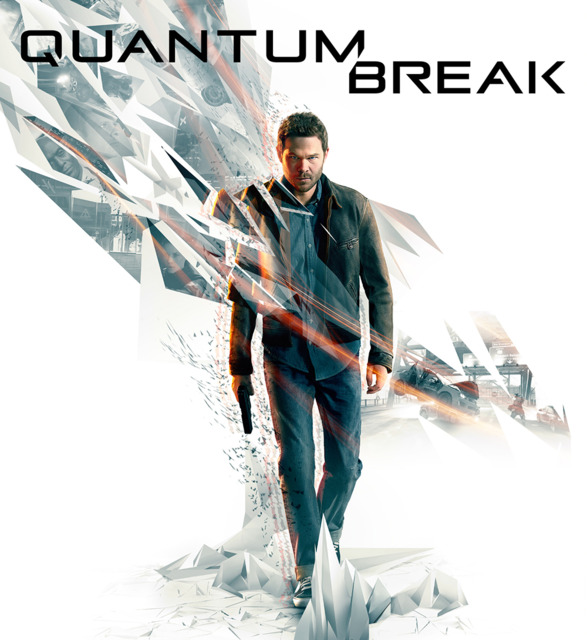
Well, there's Quantum Break. Maybe you'll like it more than Jeff? I can't say I have any great affinity for Remedy Entertainment, at least not to the extent that I'll buy any new game of theirs (or viciously argue against negative reviews for same) sight unseen. I enjoyed my time with Max Payne and Alan Wake enough in spite of their problems, though Max Payne 2's automatic game difficulty balancing made the game far more irksome than the feature was worth. I suspect that there's a lot of Remedy fans out there who have been pulling through for them to make the game they always wanted, where their sense of goofy B-movie fun could be merged with their usual third-person shooting gameplay in a more meaningful way than catching an occasional glimpse at an episode of Night Springs playing on an in-game TV or Max Payne's noirish and hilariously overwrought voiceovers for its interstitial cutscenes. Frankly, I'm not sure how TV and games were ever going to come together that smoothly; people have been complaining about Metal Gear Solid's heavy cinematic cutscenes usage interrupting the gameplay far too frequently since either the second or the fourth game, depending on when their tolerance finally gave out. I do think Remedy has it in them to make something like MGS with a real cast of actors and the like, but it probably needs to be way less serious than Quantum Break's show-within-a-game was and a bit more fun and trashy, like Night Springs.
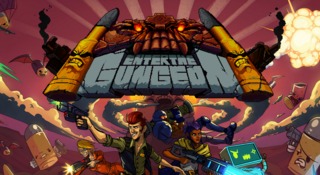
Elsewhere there is precious little activity this week. Drew-bait DiRT Rally finally makes it way to the new consoles a few months after its Steam release last December. R.B.I. Baseball '16 presents another opportunity to disappoint Jeff with how unlike his beloved NES original these newer RBI games are. This week also sees the release of silly bullet-hell roguelike Enter the Gungeon, which... well, I think we probably have enough roguelikes, but maybe there's still space for one that is also a dual-stick shooter. Nuclear Throne could always use some competition.
Fortunately, we don't need to worry about a dearth of video content on GB this week due to this drought of releases, because we'll have another full day of VR launch game nonsense with the Vive stream on Tuesday. I'd imagine there's going to be some overlap between the games featured on the Oculus Rift stream and this one, but then there's a whole heap of Steam games that will have been prepped for VR by now. We'll probably be hearing some variation of "huh, so that's what this game is like in VR" more than once.
Wiki!
Well, I suggested last time that I might not even manage a week's worth of releases, and I was right: despite sprucing up sixteen pages in total, they were all for games released between March 17th and March 24th of 1995. Like I may have intimated a couple of times, there's so goshdarn many of these games you guys. Four of those games have brand new pages, for the record: Super BomBliss, Super Suzume Gou, Turf Hero and Super Baken Ou '95, which you can read about in the usual place.
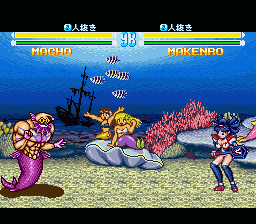
That leaves twelve others, so why don't I just quickly go through the ones that aren't mahjong, shogi, pachinko or horseracing? Makeruna! Makendo 2 is a very silly fighter game sequel to Kendo Rage which I managed to sneak into this week's Community Spotlight; Nekketsu Tairiku: Burning Heroes is a scenario-based RPG published by Enix that unfortunately has nothing to do with Burning Rangers on the Sega Saturn; Oraga Land Shusai: Best Farmer Shuukakusai, which is like Harvest Moon reimagined as a competitive puzzle game; Sprinter Monogatari: Mezase Ikkakusenkin, where you train up a track cyclist like you might a racehorse; Super Pinball II: The Amazing Odyssey, a pinball game sequel that North America never saw despite being fully in English; The Amazing Spider-Man: Lethal Foes, which is likewise a licensed Marvel platformer that somehow never left Japan; Dragon Ball Z Super Gokuden: Totsugeki-Hen is more or less a DBZ visual novel that gives the player occasional quizzes to see if they know their Trunks from their Bras; the blast from the past that is Mega Man 7, the only game in the "classic" numbered series to appear on the SNES; and The Atlas: Renaissance Voyager, an exploration/trading simulation game set in the Age of Discovery that's not unlike the Uncharted Waters series. Dragon Ball Z Super Gokuden: Totsugeki-Hen was a particularly interesting page to work on, because all of its extant screenshots came from its near-identical sequel, and vice versa. Whoops!
There's still fifteen games left in March, but I'm hopeful I can catch up to the same day on the 2016 calendar sometime later this month. April and May are the driest months in terms of releases, so maybe this Wiki Project can finally pick up the pace a little.
Lumino City!
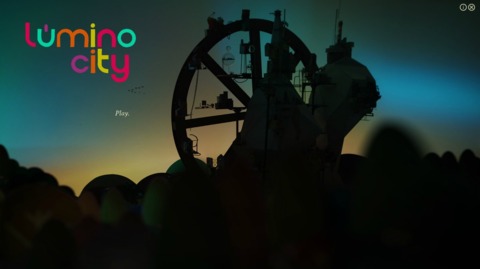
Sigh. I really liked what I played of Lumino City, and of its prior game Lume which felt to Lumino City what Ground Zeroes did to Phantom Pain: less of a self-contained game, more of an elaborate demo for the much bigger game to come. Lumino City puts the heroine Lumi on another quest to locate her grandfather, who is mysteriously kidnapped while Lumi is making tea. Her attempts to track him down takes her all over the vertiginous floating city of the title, which appears to be a group of shanty homes built into an enormous wheel and suspended many feet above the ground.
The town is built - quite literally - out of cardboard, papier mache and recycled household items. These settings were then photographed at various angles and then used in-game, with the heroine and other sprites layered on top. The resulting effect is actually quite striking, and I'd put Lumino City next to Machinarium in how effectively it builds an eccentrically designed city and gives it its own sense of logic and lived-in feel. The houses might be tiny and suspended many feet into the air with little to connect to them to important amenities like power and water, but you can just about see how someone might comfortably live there.
Unfortunately, the game is one of a rare breed that is literally uncompleteable if you happen to struggle with the game's technical requirements. It's not quite as bad as The Witness, which absolutely refused to move at a framerate higher than a binary number, but there's a certain point in the game where you have to type out morse code with a lighthouse beam, speeding up the blades to change the dashes into dots. The solution to this puzzle involves typing out "SOS" in Morse code which, as anyone ought to know, is three dots followed by three dashes and then another three dots. The player uses one lever to speed up the blades as stated, switching either to dots or dashes, while the other level is used to momentarily turn off the blades which sends out the letter formed: so, for instance, you could use the first lever to type out a dot and two dashes and then move the second lever to "send" the resulting "W". However, the game has some kind of internal timer that automatically finishes combinations of dots and dashes once an amount of time has passed since the last input. Instead of making an "S" with three dots, I instead see a parade of "E"s: the result of a single dot. The slightly delayed framerate means that this puzzle cannot be completed, and progress cannot be made.
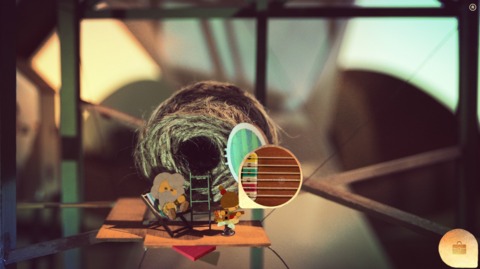
The game's developers have offered a code-based workaround in the Steam forums which forces the game to start at the subsequent chapter, which is a sorry way to go about patching the game, but I've lost all impetus to continue. It's something to not know the solution to a puzzle and to sit there staring at it trying not to ruin the game's imposed challenge by looking it up, but entirely another to make a puzzle impossible to complete because of ridiculous technical issues. I was about ready to call it quits after a musical puzzle that required you memorize and play back a 33-note melody - presumably written by a musician for whom such a challenge would be no problem - but this was the straw that broke the camel's back.
Naturally, I wouldn't go so far as to tell others that they shouldn't try Lumino City (and Lume for that matter) for themselves, especially as they're less likely to bump into that particular issue with a half-decent gaming rig, or really any PC built in the last five years. It's perhaps not worth the £15/$20 they're asking for presently, at least compared to the cheaper Stardew Valley or a number of other competitively-priced Indie games, but it would boost the value of any bundle it's in that you might be considering.
The Witcher 3: Wild Hunt!
I wrote summarily about The Witcher 3: Wild Hunt's apparently most controversial aspect - its combat - earlier in the week and was pleasantly surprised by the volume of conversation it spurred. It wasn't particularly in-depth - the intent was to elaborate for the uninitiated the importance and emphasis the game places on preparing alternate strategies for tougher foes beyond swinging a sword around and hoping to outmaneuver them - but the breadth of comments was revealing: half of them agreed with me, stating that The Witcher 3's combat was both a highlight of the game and of the action-RPG genre to which it belonged or demurred, pointing at the game's myriad problems with lag input and sluggishness. I wonder if there isn't a major patch or two separating the two opinions, but I could hardly suggest that for two reasons: it might be construed as condescending, given how much press the performance improvement patches saw and having no knowledge of how well the game played prior to the patches, and that the various patches in question totaled more than 18gb in size which isn't really the sort of breezy download I could ask someone to install to slake my curiosity as to how the game may have improved in their eyes.
Instead, I'm going to move onto the next-most controversial aspect to keep this comment train a-rollin': the game-within-a-game Gwent.
I've always had an appreciation for video games that invent their own card mini-game out of whole cloth, and especially those who build in secondary collect-a-thon quests around them. The Ur example is Final Fantasy VIII's Triple Triad, of course, and I feel The Witcher 3 borrows a lot from that template: there are cards out there that are far more powerful than the junk you start with, invariably sporting the name and image of a major playable character or NPC, and finding them and putting together a formidable deck is how you go about conquering the world's star players.
The basics of Gwent are as follows: The player builds a deck that is at least 22 cards in size. The player randomly draws 10 of these cards at the start of each round. Each turn, the player places one of their cards on the table, which is put into one of three tiers indicated by an icon on the card - melee, ranged and distant-ranged - with the idea being that you're building an army for a battle. The number on that card is added to the player's army's overall strength. At any time, the player can stop adding cards and "pass", ending their involvement with the round. Whoever has the highest army strength at the end of the round wins the battle and the opposing player loses one of their two gems. If both gems are gone, that player loses.
Gwent hits the right level of complexity for me: it won't take more than a single game to understand the basics, and only a handful more to know which cards are better than others beyond simply comparing their numerical values. For instance, spy cards add to the opposing player's army strength but give their player an extra two cards from their own deck, which makes their position a little more powerful in the long run. If the opponent goes for a vulgar display of their power for their opening gambit the player can opt to skip that round and instead play the long game by focusing on the round(s) to come, knowing that the opponent probably now doesn't have as many of their strongest cards to lean on as they once did. There are cards that can summon a swarm of units of a similar type or grow stronger if placed next to identical cards, which can often end up being more useful than the same number of high-powered hero cards. There are also Leader cards which provide a strategic benefit that's easy for the opponent to overlook, such as instantly playing a debilitating weather card or doubling the strength of every card in a specific row.
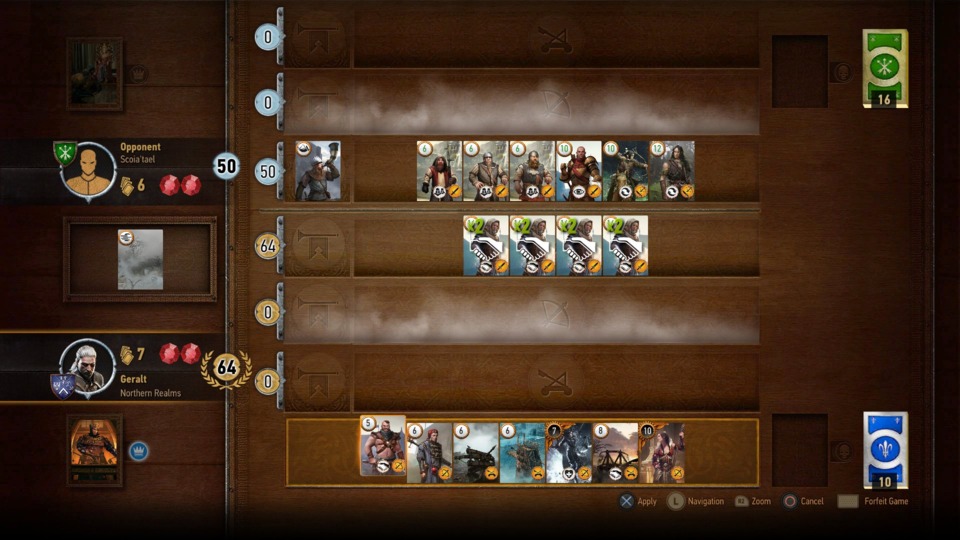
What's more is that the game has four factions, each with their own deck: the Northern Kingdoms that Geralt worked for in The Witcher 2; the Nilfgaardian invaders from the South who play a much bigger role in The Witcher 3 (minor story spoilers: you're working with their Emperor, for one); the elven guerrilla forces known as the Scoia'tael which also includes other non-humans like dwarves and halfings; and the many monsters and beasts that appear in the game, led by the mysterious skull-helmeted King Eredin of the titular otherworldly Wild Hunt. Each faction's cards have their own focus that the player needs to learn if they're going to play them effectively, like how the Northern Kingdoms focus on long-distance war machines and have a lot of "companion unit" cards which work best alongside others of the same type, or that the Nilfgaardians have an abundance of high-value leader cards, or that the Scoia'tael bring in a lot of healers who are able to bring back discarded units as well as units that can be played as either melee or ranged, or how the Monsters have many creatures who, once placed, will automatically summon many more of their kind to overwhelm their opponents not unlike a Zerg rush.
Like I said, the basics are easy to pick up but there's room for complexity as you continue to earn more cards and play against more challenging opponents. I've done fine by stacking a minimally-sized deck with all my strongest cards, but I frequently find that it's not the level 10 Vernon Roche or Phillipa Eilhart (both major W2 characters I've yet to meet in W3) cards that are winning matches, but the regular unit "Blue Stripes Commando" cards who double each other's strength when placed next to each other (which is then tripled with three cards, or quadrupled with four cards...) who are the most effective.
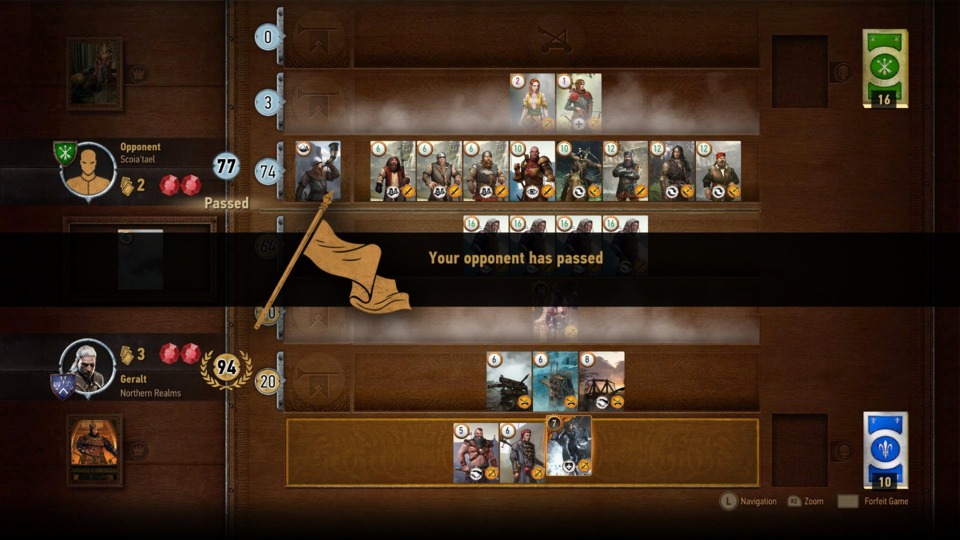
Gwent is, however, something of a slow burn. While vendors do sell many moderately powerful cards directly, you can only get the best ones by playing against particularly strong CPU opponents scattered around the world. Almost every merchant and innkeeper in the game will give you a card if you win a Gwent match with them too, though, so how much you actually want to build and improve on your Gwent game is entirely dependent on your tolerance for playing it. Just know that the longer you keep at it, the easier it becomes: your deck becomes just that little bit more unstoppable every time you claim a victory and can add a new hero card to the stack.
It's probably not much compared to something like Hearthstone, but then unlike Hearthstone it has an entire single-player RPG built around it in case you ever get bored of dropping cards on a table and want to hit a griffin with swords. (And no, WoW doesn't count for that comparison. It's a separate game! Doy!)
